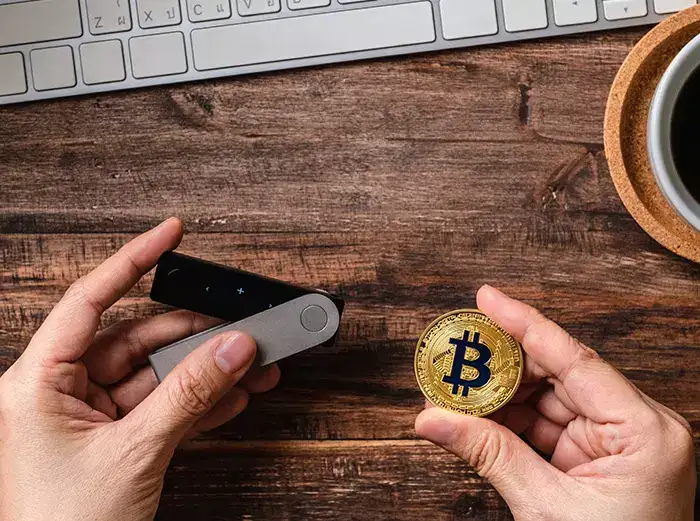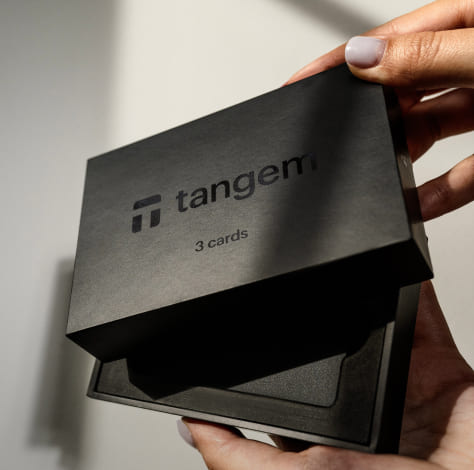Wallet security is vital for protecting your digital assets, and a 4-digit PIN can be both a safeguard and a vulnerability. Even a seemingly simple code can be easily compromised by automated attacks or user error, leading to the loss of your cryptocurrency. On the other hand, a strong PIN can enhance security significantly, ensuring your investments remain safe from theft. Understanding the implications of your PIN choice could literally mean the difference between rich and broke.
Understanding Hardware Wallets
While traditional wallets hold physical currency, hardware wallets securely store cryptocurrencies offline. These devices are designed to protect sensitive information from online threats, making them important for anyone serious about safeguarding their digital assets.
What is a Hardware Wallet?
Behind the scenes, hardware wallets function as secure storage devices for private keys needed to access cryptocurrencies. Unlike software wallets that are exposed to the internet, hardware wallets remain disconnected until they are actively used, providing an extra layer of protection against hacks and malware.
Benefits of Using a Hardware Wallet
To truly appreciate the value of hardware wallets, one must consider their unmatched security features. These wallets typically include encryption and two-factor authentication, ensuring that users can only access their funds with additional verification steps. Furthermore, hardware wallets are immune to phishing attacks, as they do not interact with the internet, thus mitigating risks associated with online threats.
Hardware wallets also allow for easy management of multiple cryptocurrencies while maintaining top-tier security. They often come with user-friendly interfaces, making them suitable for both beginners and experienced users. By keeping private keys offline, hardware wallets significantly reduce the likelihood of losing assets due to online vulnerabilities, solidifying their status as an indispensable tool for crypto investors.
The Importance of PIN Security
Even the most advanced hardware wallets can fall victim to poor PIN security. A weak or easily guessable PIN undermines all other protective measures, leaving digital assets vulnerable to unauthorized access. The increasing sophistication of hacking techniques makes it imperative for users to implement strong PINs as a fundamental barrier against potential breaches.
Robust PIN security not only acts as the first line of defense for hardware wallets but also safeguards against a range of threats. Users who underestimate the importance of a complex PIN may find themselves exposed to financial loss, ultimately risking their wealth and the integrity of their investments.
Risks of Inadequate PIN Protection
Beside technical vulnerabilities, the human element significantly contributes to the risks associated with inadequate PIN protection. Many users opt for simplistic or easily memorable combinations, which can be easily deduced or brute-forced by malicious actors. The psychological tendency to choose familiar numbers, like birthdays or repeating digits, further exacerbates this risk.
Data breaches and phishing schemes can also lead to users unknowingly revealing their PINs. Once a compromised PIN is in the wrong hands, the likelihood of rapid asset depletion increases dramatically. Thus, acknowledging and mitigating these risks is crucial for ensuring effective security for digital wealth.
Case Studies of Compromised Wallets
Studies show a concerning trend in the number of compromised wallets attributed to weak PIN security. Many cases highlight vulnerabilities that stem directly from inadequate PIN selection and protection protocols.
- Case 1: In 2020, a wallet containing $2 million was compromised when a user chose a 4-digit PIN based on their birthday, easily guessed by hackers.
- Case 2: A phishing attack in 2021 led to the loss of $500,000 worth of cryptocurrencies when the victim entered their 4-digit PIN on a fraudulent site.
- Case 3: Data from 2022 revealed that wallets using simple PINs were hacked at a rate of 75% compared to 20% for those with complex PINs.
Security breaches associated with compromised wallets provide alarming insight into the repercussions of poor PIN selection. A significant number of users fail to recognize that their wealth is at stake due to a lack of proper security measures. Enhanced awareness and adoption of stringent PIN policies could significantly mitigate these instances.
4-Digit vs. Longer PINs
It is necessary to understand the significant differences between 4-digit and longer PINs in terms of security. A 4-digit PIN allows for only 10,000 possible combinations, which can be feasibly brute-forced by determined attackers. This limited number of combinations increases the risk of unauthorized access to hardware wallets, potentially leading to considerable financial loss. As attackers become more sophisticated, reliance on short PINs presents a vulnerability that can be exploited within moments.
Vulnerabilities of 4-Digit PINs
Along with the low combination count, 4-digit PINs are susceptible to other attack vectors, such as social engineering and shoulder surfing. Users may also be tempted to choose easily guessable PINs, like “1234” or “0000,” further diminishing security. Even a small number of failed attempts could hint at valid combinations, allowing attackers to narrow their focus and increase the likelihood of success.
Advantages of Extended PIN Lengths
PINs with extended lengths significantly enhance security by increasing the number of possible combinations. An 8-digit PIN, for example, can offer up to 100 million combinations, making it exponentially harder for attackers to gain access. This higher complexity deters brute-force attacks and encourages users to adopt stronger, more unique combinations, adding a layer of protection for valuable assets.
This enhanced security not only provides peace of mind but also mitigates risks associated with weakened PIN choices. Implementing longer PINs effectively reduces the probability of unauthorized access, safeguarding financial assets against the growing threat landscape. The additional length translates into a significantly lower chance of breaches, emphasizing the importance of adopting stronger PIN practices for those who hold significant investments in hardware wallets.
Best Practices for PIN Selection
Keep in mind that not all four-digit PINs are created equal. A strong PIN should avoid easily guessable sequences like “1234” or “0000.” Instead, opt for a combination of numbers that is meaningful to you but not easily associated with personal data. Randomness is your ally; using a mix of numbers that don’t follow a pattern can significantly enhance your security. In addition, consider using a maximum of four digits where each digit is distinct; this increases the possible combinations and makes it harder for attackers to brute-force your PIN.
Creating a Strong PIN
Creating a strong PIN involves strategic choices. Avoid using significant dates, such as birthdays or anniversaries, as these can be easily obtained through social engineering. Aim for a combination that is both memorable and obscure, which can include numbers that correlate with a personal story known only to you. Combining digits in unexpected ways, like the telephone area codes from a different city you visited, can also help in creating a secure and unique PIN.
Tips for Memorizing Your PIN
With the right techniques, you can effectively memorize your PIN without resorting to writing it down. Use mnemonic devices to create a mental association between the numbers and something familiar. For instance, assign each digit to a specific image, creating a visual story that captures the sequence. This method can simplify the recall process, as your brain is more adept at remembering vivid images than abstract numbers.
- Mental association enhances retention.
- Mnemonic devices aid in memory.
- Visual imagery strengthens recall.
And you can also utilize techniques like chunking your PIN into smaller groups to make it easier to manage. For example, if your PIN is “5821,” consider breaking it down to “58” and “21.” This method taps into your brain’s ability to handle smaller pieces of information more effectively. Another tactic is to practice entering the PIN in a safe environment until it becomes second nature, reinforcing its position in your memory. Engaging with your PIN frequently improves your ability to access it quickly as needed.
- Chunking simplifies complex information.
- Frequent practice enhances familiarity.
- Safe environment aids in learning.
Knowing these best practices can dramatically reduce the risk of unauthorized access to your hardware wallet and keep your crypto assets secure.
Additional Security Measures
Once again, relying solely on a 4-digit PIN for your hardware wallet may leave your digital assets vulnerable. Incorporating additional security measures can significantly enhance your protection against unauthorized access and theft. Options like two-factor authentication (2FA) and regular software updates create multiple layers of defense, rendering even the most determined attackers less likely to succeed.
Two-Factor Authentication
Among the most effective strategies to enhance wallet security is the implementation of two-factor authentication. This method requires not only your PIN but also an additional form of verification, such as a code sent to your mobile device or an authentication app. By demanding this extra step, 2FA dramatically reduces the risk of unauthorized transactions, as a thief would need both your PIN and access to your second factor.
Regular Software Updates
Along with 2FA, keeping your hardware wallet software updated is vital for maintaining security. Software updates often contain patches for known vulnerabilities and improvements to existing security measures. Failing to regularly update your device can leave it exposed to potential threats that could compromise your cryptocurrency holdings.
Updates are necessary for ensuring your hardware wallet is equipped with the latest security features. Ignoring updates might mean that you are susceptible to exploits and bugs that have been addressed in newer versions. By keeping your software current, you not only benefit from enhancements but also protect against evolving security threats that target outdated systems.
Conclusion
Now, the importance of a robust PIN for hardware wallets cannot be overstated. A simple 4-digit PIN may seem sufficient, but it can expose assets to significant risks. Cybercriminals can easily exploit weaknesses, especially when users opt for short and easily guessable codes. The difference between a secure wallet and one that is vulnerable to breaches lies in the strength of its access controls.
Investing time in creating a complex and unique PIN adds an important layer of protection to digital assets. Individuals should prioritize their security measures, understanding that a stronger PIN can safeguard their wealth from potential threats. The stakes are high, and making informed decisions now can protect users from financial loss in the future.






